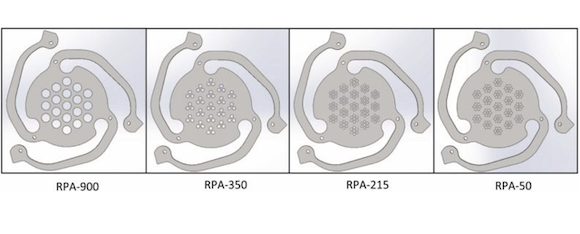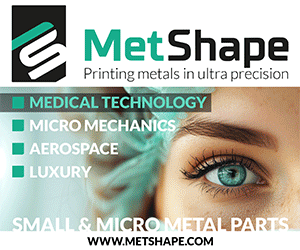MIT researchers produce glass-ceramic satellite sensors in days with AM
September 5, 2022

Scientists from the Massachusetts Institute of Technology (MIT), Cambridge, USA, have created what are said to be the first completely digitally manufactured plasma sensors for orbiting spacecraft. These plasma sensors (retarding potential analysers [RPAs]), are used by satellites to determine the chemical composition and ion energy distribution of the atmosphere.
The results of MIT’s work were recently published in the Additive Manufacturing journal under the title ‘Compact retarding potential analyzers enabled by glass-ceramic vat polymerization for CubeSat and laboratory plasma diagnostics.’
Typically, semiconductor plasma sensors are made from silicon and thin-film coatings manufactured in a cleanroom, making them expensive and time-consuming to produce. The MIT scientists, by contrast, utilised VAT Photopolymerisation (VPP) Additive Manufacturing, a sinter-based AM process, and laser cutting, to produce their glass-ceramic plasma sensors in days, for tens of dollars.
This application of Additive Manufacturing using a durable glass-ceramic material meant that the scientists were able to create sensors in complex shapes that can withstand the wide temperature swings encountered by satellites in low Earth orbit.
The additively manufactured and laser-cut hardware is said to perform as well as the state-of-the-art semiconductor plasma sensors. Due to their low cost and quick production, the sensors are reputedly ideal for CubeSats; inexpensive, low-power, lightweight satellites often used for communication and environmental monitoring in Earth’s upper atmosphere.
“Additive Manufacturing can make a big difference in the future of space hardware,” stated Luis Fernando Velásquez-García, a principal scientist in MIT’s Microsystems Technology Laboratories (MTL) and senior author on the paper. “Some people think that when you 3D print something, you have to concede less performance. But we’ve shown that is not always the case. Sometimes there is nothing to trade off.”
The researchers have stated that the high precision enabled by digital and Additive Manufacturing could enable the AM of sensors for applications in fusion energy research or supersonic flight. The rapid prototyping process could also spur more innovation in satellite and spacecraft design.
“If you want to innovate, you need to be able to fail and afford the risk,” Velásquez-García added. “Additive Manufacturing is a very different way to make space hardware. I can make space hardware and if it fails, it doesn’t matter, because I can make a new version very quickly and inexpensively, and really iterate on the design. It is an ideal sandbox for researchers.”
Velásquez-García also stated that he hopes to further enhance the fabrication process to create even more precise complex hardware, possibly through the reduction of layers or pixel size in the glass-ceramic VPP process. If achieved, this would remove the laser cutting step, thereby making it feasible to additively manufacture the sensors in space.
The paper is available to read here in full.

















